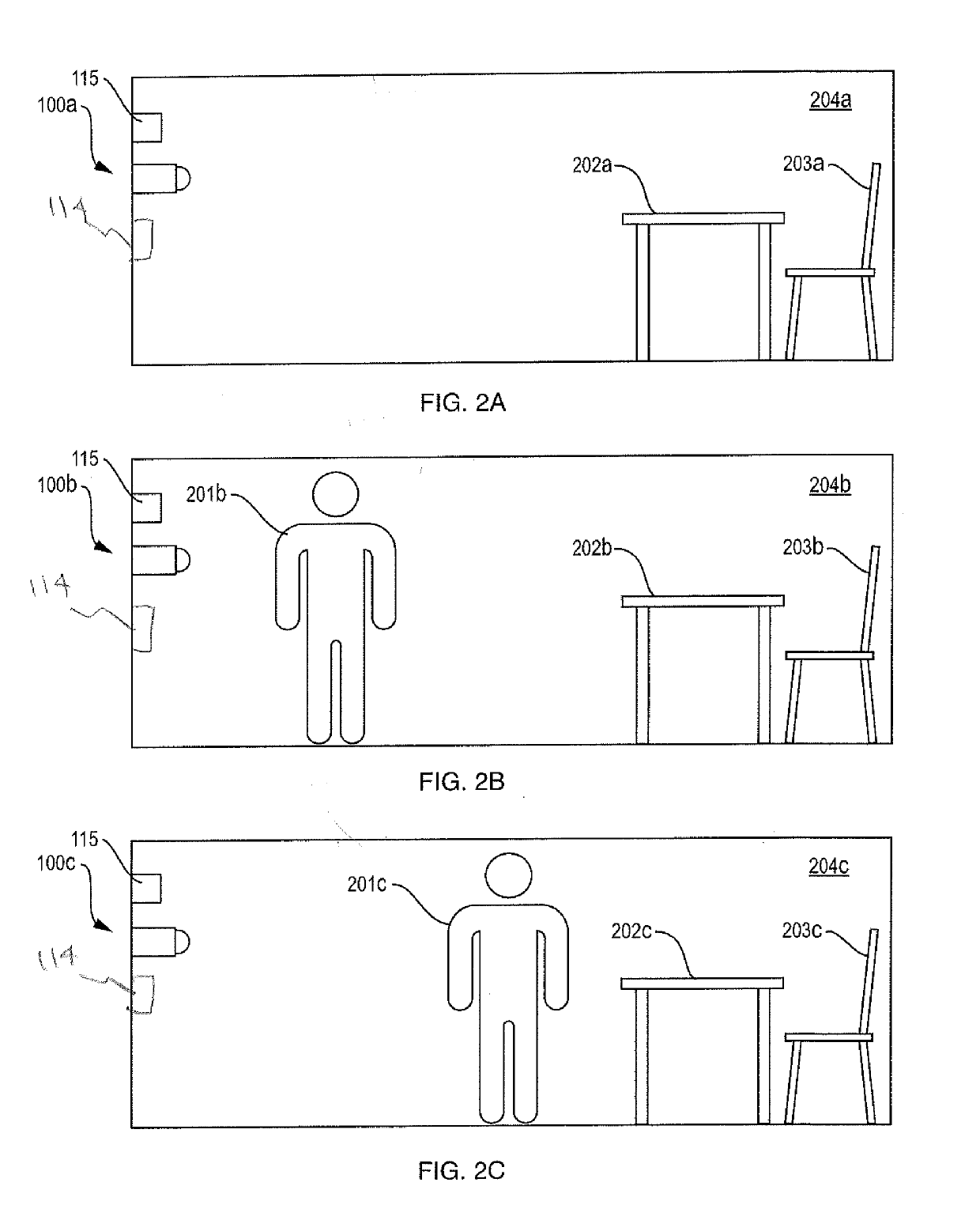System to determine events in a space
a technology of space and events, applied in the field of systems to determine events in space, can solve the problems of aging in place, putting elders at risk, and the biggest risk of falling on the elderly person living alone, and achieves the effects of low false alarm rate, fast alarming, and easy installation
- Summary
- Abstract
- Description
- Claims
- Application Information
AI Technical Summary
Benefits of technology
Problems solved by technology
Method used
Image
Examples
Embodiment Construction
[0054]The present invention features and discloses a system and method that determines if certain events have occurred in an arbitrary space. The foundation of the system of the present invention is a pyro-electric sensor that detects activities (an enhanced burglar alarm detector) capable of detecting motion, sound and / or distance; either all together, independently or in various combinations. By putting one of these sensors in each important room, the present invention can figure out where the elderly person (or other person of interest) is and how active they are in each room as a function of time. The recorded information is then stored and trended allowing the system to look for changes and issue alerts on events that might be problematic. For example, an increase in nighttime bathroom use across 2 nights typically means an elderly woman has a urinary tract infection).
[0055]FIG. 1 depicts an exemplary embodiment of such an event detection system 100 according to the teachings o...
PUM
 Login to View More
Login to View More Abstract
Description
Claims
Application Information
 Login to View More
Login to View More - R&D
- Intellectual Property
- Life Sciences
- Materials
- Tech Scout
- Unparalleled Data Quality
- Higher Quality Content
- 60% Fewer Hallucinations
Browse by: Latest US Patents, China's latest patents, Technical Efficacy Thesaurus, Application Domain, Technology Topic, Popular Technical Reports.
© 2025 PatSnap. All rights reserved.Legal|Privacy policy|Modern Slavery Act Transparency Statement|Sitemap|About US| Contact US: help@patsnap.com



